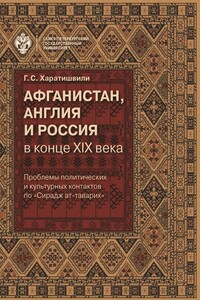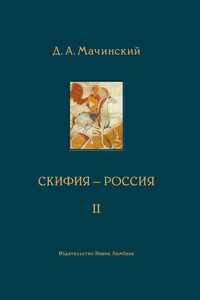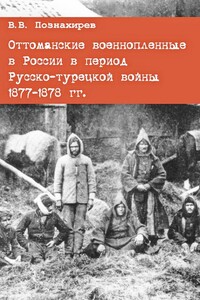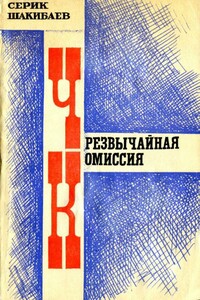Япония в эпоху Токугава - [3]
In the Japanese system of historical periodization the Tokugawa era generally corresponds to the kinsei period, though in the Japanese historiography there are the different viewpoints on the chronological limits of the latter. There is no direct equivalent of the term kinsei in the European history. It is usually translated in English as «early modern». It’s likely to be a kind of the transition period from medieval epoch to Modernity, which lasted 264 years.
The Tokugawa era was preceded by the times of unrest. The second half of the XVI century in Japan was marked by the struggle for the unification of the country. In 1600 the battle of Sekigahara has put an end to the long-lasted period of civil wars and the country started to reestablish it’s political stability. The new phase in the history of Japan was termed after the victor in the battle of Sekigahara — Tokugawa Ieyasu — who proclaimed was a shogun[10] in 1603, and so founded the third — Tokugawa — shogunate (1603–1867) in the Japanese history. It is also known as the «Edo period» — after the name of the city that became the residence of the Tokugawa shoguns[11].
The epochs, just like people, leave their heritage, and not rare are tendentiously evaluated by their posteriors. For instance, for a long time the Tokugawa era was generally considered to be a period of Japan’s stagnation and self-isolation from the outside world[12], which resulted in the conservation of it’s backwardness in the preindustrial epoch. Actually, the Tokugawa era was not reach in outstanding events. Nevertheless, the social and cultural achievements of that period determined the subsequent developments in Japan.
A study of the Tokugawa era raises a number of important research problems. For instance, it should be yet investigated, whether such measures of the Tokugawa shoguns as «shutting doors» before the foreigners were a benefit or harm for Japan. Or, in which proportion the rapid development of capitalism in Meiji Japan was a natural consequence of the preceding national history, or the result of an external impact? These and other resembling questions are closely related to some fundamental problems of the socio-economic development of Oriental countries: namely, to the definition of the socio-economic formation they belonged to before the invasion of the colonialist powers; to the identification of the interaction model of the internal and external factors of development of capitalism; and, finally, to finding out common and particular features in the historical development of a specific country.
While discussions on these problems are going on for several decades both in Russia[13] and in the rest of the world, it did not affect greatly the multiplicity of viewpoints concerning this matter. In this case, the different approaches reflect the diversity of the real history: each subject of the world-historical process has its own particular history that cannot be easily forced into the limits of abstract schemes.
For adequate perception of the complexity and ambiguity of the historical development it is not sufficient to study the facts of the political history alone. It’s necessary to be acquainted with the economic history of the country and to study the economic activities of the people and the social interaction in their course, the level of technological development, the progress of agriculture etc., while taking into account the geographical factor — the general ecological conditions, the fertility of land and the farming technique. It was admitted by Russian orientalists, and in the 1980"s the numerous publications appeared, where the significance of studying the economic history of the Orient was stressed[14].
The complexity of the historical process is the result of the interaction of various objective and subjective factors. But the pattern of this interaction is determined by man. Obviously, the special attention to the human factor is a distinctive feature of the contemporary historical studies, though quite long ago lord Bolingbroke stated that the true subject of history is a human being[15]. In Russian japanology, the genre of historical biography is represented by a brilliant book about Toyotomi Hideyoshi by A. A. Iskenderov[16]. In my opinion, Tokugawa Ieyasu, who, without any doubt, was an outstanding personality, is worthy of a special research work as well. There is an Arabic proverb that says that «people look much more like their times than like their fathers». Continuing this thought one can say that the adequate perception of any epoch is impossible without understanding people who leaved in that time and without finding out the motives of their deeds.
All this concerns not only political leaders. For instance, the Japanese system of marketing and management, that is now in the focus of international interest, roots in the practice of the merchant dynasties of the Tokugawa era, such as Mitsui, Sumitomo, Ono, Konoike, and Yodoya. Despite the inferior social status, the Japanese merchants of that time were quite successful in the trading and financial spheres. Historical roots of the Japanese business philosophy originated and developed during the Tokugawa era. The Regulations of the merchant families, appeared in the XVIII century, give an indication of the ethic foundations of Japanese merchants’ professional activity. And it is from their midst where the intellectuals of the Meiji era rose from.

Книга представляет собой исследование англо-афганских и русско-афганских отношений в конце XIX в. по афганскому источнику «Сирадж ат-таварих» – труду официального историографа Файз Мухаммада Катиба, написанному по распоряжению Хабибуллахана, эмира Афганистана в 1901–1919 гг. К исследованию привлекаются другие многочисленные исторические источники на русском, английском, французском и персидском языках. Книга адресована исследователям, научным и практическим работникам, занимающимся проблемами политических и культурных связей Афганистана с Англией и Россией в Новое время.

В книге рассказывается история главного героя, который сталкивается с различными проблемами и препятствиями на протяжении всего своего путешествия. По пути он встречает множество второстепенных персонажей, которые играют важные роли в истории. Благодаря опыту главного героя книга исследует такие темы, как любовь, потеря, надежда и стойкость. По мере того, как главный герой преодолевает свои трудности, он усваивает ценные уроки жизни и растет как личность.

Дмитрий Алексеевич Мачинский (1937–2012) – видный отечественный историк и археолог, многолетний сотрудник Эрмитажа, проникновенный толкователь русской истории и литературы. Вся его многогранная деятельность ученого подчинялась главной задаче – исследованию исторического контекста вычленения славянской общности, особенностей формирования этносоциума «русь» и процессов, приведших к образованию первого Русского государства. Полем его исследования были все наиболее яркие явления предыстории России, от майкопской культуры и памятников Хакасско-Минусинской котловины (IV–III тыс.

1968 год ознаменовался необычайным размахом протестов по всему западному миру. По охвату, накалу и последствиям все происходившее тогда можно уподобить мировой революции. Миллионные забастовки французских рабочих, радикализация университетской молодежи, протесты против войны во Вьетнаме, борьба за права меньшинств и социальную справедливость — эхо «долгого 68-го» продолжает резонировать с современностью даже пятьдесят лет спустя. Ричард Вайнен, историк и профессор Королевского колледжа в Лондоне, видит в этих событиях не обособленную веху, но целый исторический период, продлившийся с середины 1960-х до конца 1970-х годов.

В работе впервые в отечественной и зарубежной историографии проведена комплексная реконструкция режима военного плена, применяемого в России к подданным Оттоманской империи в период Русско-турецкой войны 1877–1878 гг. На обширном материале, извлеченном из фондов 23 архивохранилищ бывшего СССР и около 400 источников, опубликованных в разное время в России, Беларуси, Болгарии, Великобритании, Германии, Румынии, США и Турции, воссозданы порядок и правила управления контингентом названных лиц, начиная с момента их пленения и заканчивая репатриацией или натурализацией. Книга адресована как специалистам-историкам, так и всем тем, кто интересуется событиями Русско-турецкой войны 1877–1878 гг., вопросами военного плена и интернирования, а также прошлым российско-турецких отношений.

Автор — полковник, почетный сотрудник госбезопасности, в документальных очерках показывает роль А. Джангильдина, первых чекистов республики И. Т. Эльбе, И. А. Грушина, И. М. Кошелева, председателя ревтрибунала О. Дощанова и других в организации и деятельности Кустанайской ЧК. Используя архивные материалы, а также воспоминания участников, очевидцев описываемых событий, раскрывает ряд ранее не известных широкому читателю операций по борьбе с контрреволюцией, проведенных чекистами Кустаная в годы установления и упрочения Советской власти в этом крае. Адресуется массовому читателю и прежде всего молодежи.